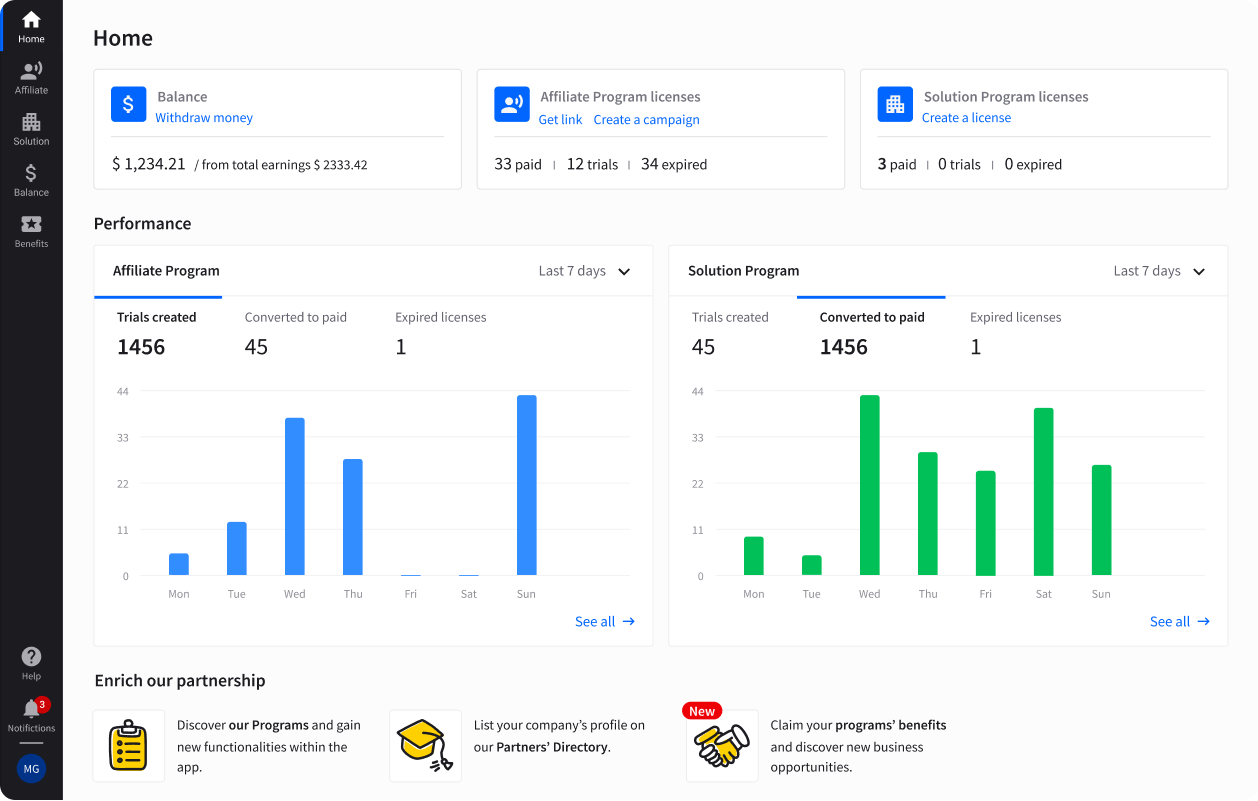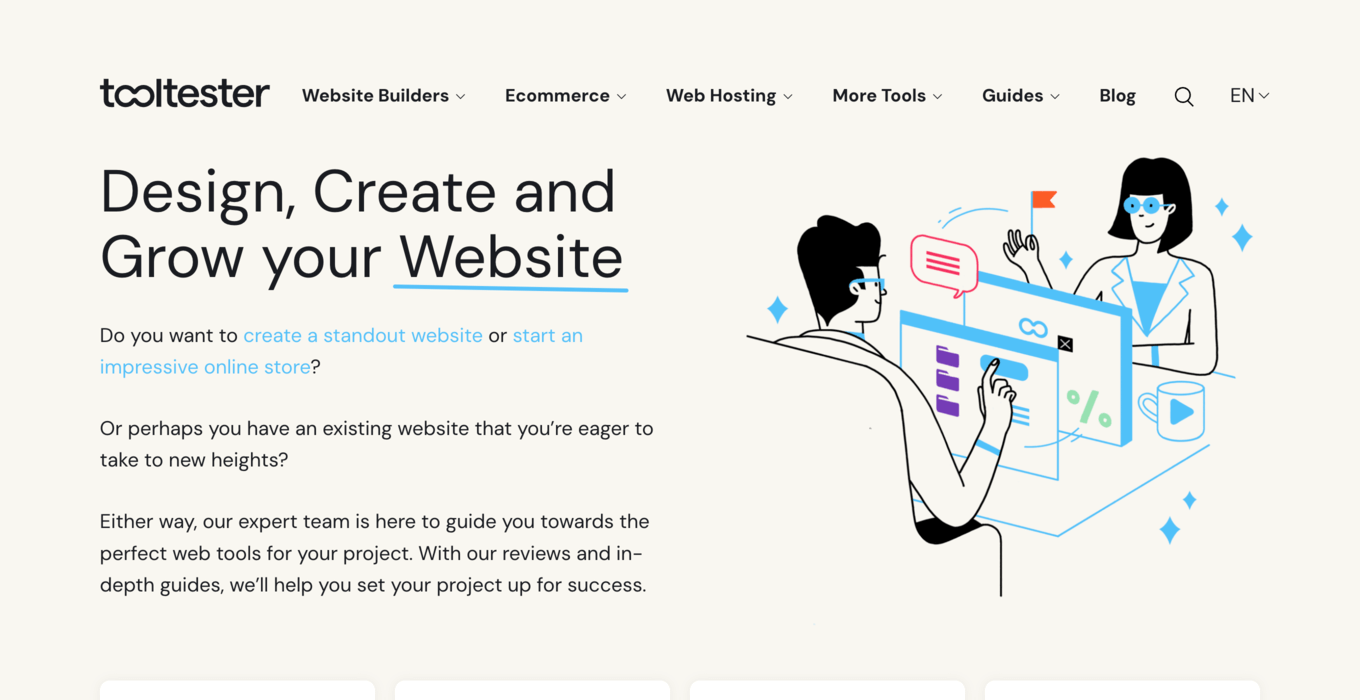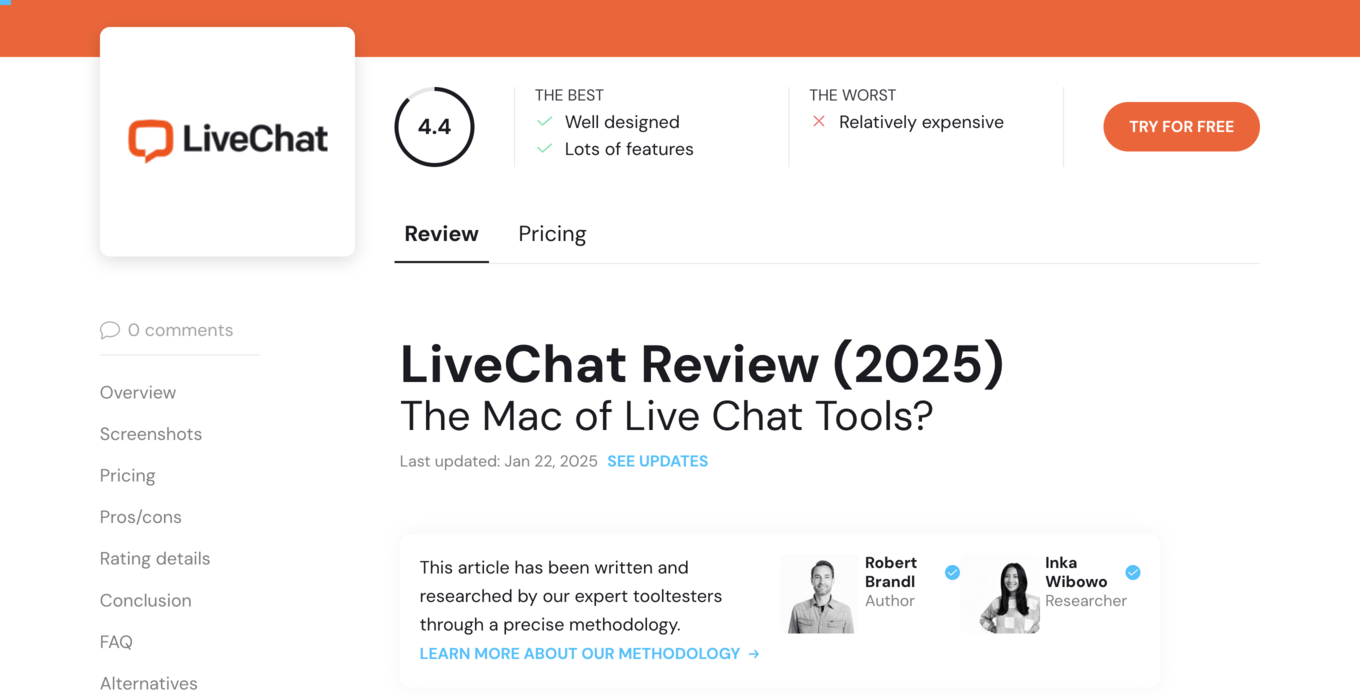Showing top 0 results 0 results found
Showing top 0 results 0 results found

Key findings:
Thought leadership starts with focused authority
Establishing influence in the SaaS space isn’t about covering every trend; it’s about committing to a clear niche and delivering depth. Content marketing creators who define a specific audience and stay consistent in voice, format, and perspective build stronger trust and long-term visibility. Authority grows not from volume, but from clarity and relevance.
Strategic collaboration multiplies reach and credibility
Working with SaaS platforms like Text, co-producing thought leadership content, or contributing to expert panels expands your audience and reinforces your position as a credible voice. When collaboration is grounded in authenticity and aligned with your content strategy, it amplifies your impact and opportunities.
What you’ll learn from this article:

Successful thought leadership is more than sharing insights — it’s about shaping perspectives, guiding industry conversations, and building lasting trust. For content creators and bloggers focused on SaaS products, developing a clear thought leadership strategy can lead to stronger brand recognition, deeper target audience engagement, and new opportunities for collaboration.
Whether you’re writing product breakdowns, tutorials, or trend analyses, your ability to influence how others think about software and innovation sets your work apart. The challenge is turning expertise into authority in a way that’s both consistent and impactful.
This guide outlines practical strategies to help you define your thought leadership voice, publish content that resonates, and leverage partnerships — including real examples from creators who have grown their influence through programs like the Text Partner Program.
Understanding thought leadership in SaaS
Thought leadership is often mistaken for self-promotion or personal branding. While visibility is part of it, true thought leadership is about providing valuable content with innovative ideas that add value to your audience and shape their thinking about a topic. In the SaaS world, where users, decision-makers, and teams are constantly evaluating tools and frameworks, this kind of influence matters.
What thought leadership really means
At its core, thought leadership is the ability to communicate ideas that challenge assumptions, simplify complexity, or introduce new ways of thinking. It’s about seeing patterns, identifying opportunities, and helping others make better decisions; not just about which software to use, but how to think about problems the software solves.
For bloggers and content creators in SaaS, this might look like:
-
Explaining not just what a product does, but how it changes business solutions.
-
Offering unique perspectives and analysis that product teams can’t always provide.
-
Emerging trends across multiple tools, industries, or user behaviors.
Why it matters in SaaS
The SaaS audience is highly informed and often skeptical of shallow content. Whether you’re writing for developers, marketers, or support teams, depth and originality are essential. Thought leadership helps you:
-
Build trust with a specific field audience who returns for expert insight, not just information.
-
Establish credibility that opens doors to collaborations, speaking engagements, and partnerships.
-
Influence adoption and perception of the tools you cover (a major asset if you’re part of affiliate or partner programs).
Adding context and vision beyond expertise
Having knowledge isn’t enough. What sets true thought leaders apart is their ability to frame that knowledge within a larger narrative:
-
What does this new AI feature mean for customer support workflows?
-
How will changes in pricing models affect SaaS purchasing decisions?
-
Why is a particular integration trend worth paying attention to?
Thought leadership is about stepping back from the “how-to” and offering a meaningful take on the “why now” or “what’s next” decision-making.
Identifying your niche and authority zone
Becoming a thought leader starts with clarity. Too much breadth dilutes credibility. As a SaaS content creator, the most impactful path is to define your focus; where your perspective meets target audience needs.
Finding your niche begins with answering: “What questions do you most enjoy answering?”, “What recurring feedback are you getting from your readers?” If you gravitate toward explaining onboarding processes, demystifying chatbot strategy, or comparing SaaS tools, that’s a clue.
Real-world leadership examples
Brandon Klayman (Conscious Commerce)
As a Text partner, Brandon carved a niche blending ecommerce support tools with conversion optimization. By focusing on how real-time chat impacts sales flows, he turned his expertise into authority within his niche.
📚 See Brandon’s success story and learn about his personal story!
Syed Balkhi (WPBeginner)
“My experience with this Partner Program has been incredible. … We also found lots of co‑marketing opportunities and amazing support.” — Syed Balkhi
Syed’s authority zone is clear: helping WordPress entrepreneurs scale using communication and support tools, including Text products. He leverages his niche audience to create valuable, actionable tutorials and recommendations.
Bernard May (National Positions)
“Products are easy-to‑use, the setup is simple, and we receive a great partner discount.” — Bernard May
Bernard’s strength is content grounded in practical audits, case studies, and campaign results, leading his readers to trust his setup recommendations for conversion and support tooling.
Why these examples matter
-
Audience fit: Each creator aligned Text apps promotion with a content niche their followers wanted: ecommerce, WordPress tools, and digital marketing.
-
Clear positioning: They didn’t promote multiple software verticals; they doubled down on what they understood deeply.
-
Evolving content strategy: With insights from Text apps, they crafted thought leadership efforts rooted in real metrics and use cases.
How to define your authority zone
-
Map your strengths to audience interests: Review your most popular posts on what topic overlaps with actionable advice tied to a specific SaaS tool or workflow?
-
Choose a persona: Are you teaching marketers, developers, support leads, or startup founders? Focus tightly.
-
Tie your content to real outcomes: Instead of a general article on chatbots, show how digital transformation impacts lead quality or response time.
-
Stay consistent: Over time, your readers will connect your name with a distinct angle, like chat automation in ecommerce or SaaS onboarding support.
Sticking with one zone and specific challenges doesn’t box you in; it strengthens your identity. When brands, platforms, or readers recognize your focus, doors open: partnership invites, co-marketing chances, and early access to product releases. That clarity becomes your leverage.
Looking for a beneficial partnership?
Join our Solution Program to unlock a new revenue stream and stand out from the competition.

Build thought leadership strategy with new ideas and a consistent basis
Establishing yourself as a thought leader doesn’t happen by accident. It requires a deliberate, evolving content strategy that consistently communicates depth, originality, and relevance. For SaaS bloggers and content creators, this means moving beyond surface-level product features and into narrative-driven, insight-rich publishing. The goal isn’t posting regularly — it’s to publish smarter.
Prioritize depth over frequency
Leadership content educates, frames decisions, or offers a new lens. A single piece that explains the long-term impact of AI in help desk automation will resonate far more than five rushed feature summaries. Consider formats that allow you to go deep:
-
Strategic comparison guides
-
Use-case breakdowns backed by performance metrics
-
Industry commentary paired with product applications
Tie content to industry shifts
Thought leaders speak to what’s changing and why it matters. If you’re covering SaaS, link your content to broader shifts: new compliance laws, AI tooling standards, and pricing model debates. This context turns a blog post into a reference point for your audience.
For example, if a new privacy regulation affects chatbot interactions, your content shouldn’t just mention the law; it should show how SaaS support tools like Text apps are adapting, and what that means for startups versus enterprise teams.
Use content to shape, not just follow
Resist the temptation to mirror what’s trending. Instead, analyze why something is trending and what might be misunderstood about it. That’s where real business leaders live. You don’t need to break news, but you do need to offer interpretation. A thought leader adds clarity when the market is noisy.
Build around signature themes
Choose 2–3 recurring themes that align with your niche and stick with them across content formats. This builds authority over time and helps audiences (and platforms) understand what you’re known for. Like: human-centric support automation, lean SaaS for small teams, privacy-first product strategy.
These themes give your blog or channel cohesion and help your posts connect as a larger story.
Include strategic content types
Not all content serves the same role. Thought leaders balance content that attracts attention with content that builds trust:
-
Cornerstone pieces: Comprehensive, timeless content that anchors your credibility.
-
Perspectives: Short-form takes on trends, shifts, or missteps in the industry.
-
Collaboration content: Co-written pieces, partner case studies, or interviews with SaaS founders.
Leverage your experience and partnerships
Don’t underestimate the value of firsthand stories. If you’ve tested dozens of customer support tools, write about what didn’t work, not just what did. If you’re part of a program like the Text Partner Program, use that insider perspective to create content others can’t. Share what it’s like to get early access, create co-branded assets, or provide input on beta features.
Audiences recognize authenticity, and partnerships offer a powerful lens to show your industry involvement without sounding promotional.
Looking for a beneficial partnership?
Join our Solution Program to unlock a new revenue stream and stand out from the competition.

Amplifying reach through collaboration
Your content may be insightful, well-researched, and expertly written, but without visibility, it can’t lead. Strategic collaboration allows your voice to scale beyond your own platform and reach audiences and potential customers that are already primed for what you have to say.
Here are five collaborative pathways that consistently expand reach and deepen industry influence for SaaS-focused content creators.
Guest features and expert roundups
You tap into someone else’s audience and credibility, and bring fresh ideas into new circles.
How to start:
-
Pitch high-value articles to SaaS product blogs or industry sites.
-
Join roundup posts or expert opinion panels.
-
Offer unique insights (not repurposed content) to stand out.
Tip: Include subtle references to your partner affiliations (like Text) to add weight and context to your expertise.
Joint webinars, panels, and podcasts
Live formats build trust fast. Viewers hear how you think and engage, not just what you write.
How to start:
-
Co-host a session with a SaaS tool you already use or review.
-
Reach out to podcast hosts in your niche with a proposed topic.
-
Repurpose webinars into blog content, quote cards, and email series.
Collaborative content with SaaS brands
Shows you’re embedded in the industry, not just commenting from the outside.
How to start:
-
Join affiliate or partner programs that provide co-branded content kits.
-
Offer to write joint case studies or behind-the-scenes implementation stories.
-
Request early access to new features and share a transparent review.
Social sharing loops
Amplifies content distribution through aligned networks, without paid promotion.
How to start:
-
Mention or quote SaaS founders, PMs, or other creators in your posts.
-
Tag collaborators or platforms when sharing your content.
-
Participate in relevant Slack communities, LinkedIn groups, and SaaS forums.
Co-branded campaigns and newsletters
Introduces your voice to targeted email lists, often with high conversion potential.
How to start:
-
Reach out to product marketing teams with a value-first proposal.
-
Offer to create a guest segment or lead a “creator spotlight.”
-
Share metrics from previous campaigns to build trust.
Collaboration is not just about reach; it’s about positioning. When your name appears next to other trusted creators, teams, or tools, it reinforces your authority. And when those collaborations are genuine, your audience can tell.
Ready to start? Look at the tools you already use and trust. Chances are, their teams are actively looking for content creators like you to partner with.
Success through the Text Partner Program (a case study)
When done right, thought leadership and partnership go hand in hand. The Text Partner Program offers a real-world opportunity for content creators and bloggers to demonstrate expertise while monetizing their voice. Here’s how one standout partner did it.
Tooltester: from review site to authority
Tooltester, led by Robert Brandl, is a well-established review platform focused on web and SaaS tools. Its editorial strategy centers around in-depth, independent testing, making it an ideal candidate for Text affiliate model.

“Text pays fair referral commissions and we are seeing a very decent trial to conversion rate of more than 20%. Since many of our other partners pay a one‑off commission, I like that Text offers a lifetime‑commission model.”
Why Tooltester became a Text partner
-
They actively used LiveChat, one of Text’s products, and believed in the product.
-
Their audience was already looking for trustworthy tool comparisons.
-
The Partner Program’s recurring commission model aligned with their long-term content monetization goals.
“We are seeing a very decent trial to conversion rate of more than 20%.”
Tooltester content strategy
Tooltester’s success came from aligning high-quality content with authentic recommendations:
-
Reviews were backed by rigorous testing and real usage.
-
Their product analysis included not just features, but design quality and user experience.
-
They maintained high editorial standards, never compromising trust for promotional gains.
“LiveChat is a very slick piece of software. Great design and excellent user interface make it stand out in the crowd. It’s like ’the Mac of live chat products.'”

“With LiveChat, we’ve had zero complaints so far.”
Results that resonate
| Metric | Outcome |
|---|---|
| Referral conversions | Over 20% trial-to-paid conversion rate |
| Subscriptions referred | More than 300 over the span of around nine years |
| Audience trust | Zero complaints across hundreds of referrals |
Tooltester’s consistent and in-depth approach transformed it from a general software review site into a trusted source of guidance. Their LiveChat partnership became a natural extension of their content strategy, not a detour.
📚 See Tooltester’s LiveChat review and see how they create thought leadership content!
Key takeaways for content creators and bloggers
-
Use the tools you promote. Firsthand knowledge builds trust.
-
Focus on quality over volume. Thorough, well-structured content yields stronger long-term value.
-
Integrate affiliate relationships transparently. Recommendations should follow the reader’s needs, not just commission incentives.
-
Track what works. The Text Partner Program supports performance tracking, enabling partners to refine their outreach and content.
Why this case study matters
Tooltester’s story is proof that affiliate programs can do more than generate income; they can reinforce your authority and elevate your brand. With a thoughtful strategy, content creators can align partnerships with their niche and grow both influence and revenue in a sustainable way.
📚 See Tooltester’s success story for more insights!
Looking for a beneficial partnership?
Join our Solution Program to unlock a new revenue stream and stand out from the competition.

Using SaaS product reviews to build influence
SaaS product reviews aren’t just for affiliate clicks; they’re powerful tools for building trust and authority. When done well, reviews showcase your expertise, help your audience make informed decisions, and position you as a go-to voice in your niche.
Go beyond features
Don’t just list what the product does. Explain who it’s best for, how it fits into real workflows, and what limitations to expect. Context turns a standard review into valuable guidance.
Prioritize firsthand insight
Use the tool, document your process, and share screenshots or real scenarios. This builds credibility and sets your content apart from generic write-ups.
Frame the bigger picture
A product review can be a gateway to broader topics, like automation, onboarding, or CX strategy. This helps expand your influence beyond a single post.
Be transparent
Your audience values honesty. Acknowledge drawbacks, disclose affiliate links clearly, and keep comparisons fair. Thought leadership is built on trust.
Keep reviews fresh
SaaS changes fast. Update your reviews regularly to stay relevant and improve search visibility, while showing that you’re an active, reliable source.
Well-crafted reviews aren’t just content, they’re long-term credibility assets. Use them to teach, guide, and lead the conversation in your space.
Measuring the impact of thought leadership
While traditional metrics like clicks and shares matter, thought leadership success is often seen in how your ideas shape conversations, attract recognition, and lead to deeper engagement. Use the table below to identify key indicators and what they reveal about your influence.
| Category | What to measure | What it means |
|---|---|---|
| Influence signals | Organic backlinks from reputable sources, mentions in industry newsletters, and podcast citations | Your content is considered trustworthy and authoritative enough to be referenced by others in your niche. |
| Audience engagement | Comment quality, time on page, scroll depth, social media replies, email responses | Readers are actively engaging with your content, staying longer, and taking time to respond, suggesting high relevance and value. |
| Reach and visibility | Growth in followers/subscribers, tags, and shares by professionals in your industry | Your presence is expanding within targeted circles, and your audience sees you as a valuable voice in SaaS conversations. |
| Business impact | Affiliate link performance, referral traffic, product sign-ups, or conversions | Your content is directly influencing decisions and leading users toward specific tools or solutions you’ve recommended. |
| Reputation building | Invitations to guest post, co-host webinars, contribute to reports, or speak at events | Brands and peers view you as a credible partner or expert worth collaborating with on high-visibility or strategic initiatives. |
| Thought resonance | Readers quoting you in discussions, asking follow-up questions, or referencing past content | Your insights are memorable and actionable, and they continue to guide your audience’s decisions and perspectives beyond a single post. |
This framework helps shift your mindset from tracking only short-term metrics to identifying signs of long-term authority and influence: the true outcome of effective thought leadership.
Sustaining long-term credibility
Credibility in thought leadership isn’t built overnight, and it doesn’t last without ongoing effort. For SaaS content creators, long-term trust depends on consistency, integrity, and relevance.
-
Maintain a consistent voice: Stick to a clear perspective and tone across all content types. Whether you’re reviewing products or analyzing trends, let your audience know what to expect from you.
-
Avoid trend chasing: Focus on topics that align with your expertise and audience needs. Not every new SaaS trend needs your take; choose what adds value.
-
Keep content updated: Review and revise older posts to reflect product changes or new insights. This shows commitment to accuracy and builds reader trust.
-
Be transparent with partnerships: Clearly disclose affiliate links or sponsorships. Promote tools you genuinely believe in; authenticity matters more than promotion.
-
Keep learning: Stay engaged with the industry and share what you’re discovering. Evolving publicly helps your content stay relevant and human.
Credibility is earned through actions over time. Stay honest, consistent, and useful, and your influence will grow with your content.
Conclusion
Thought leadership isn’t about being everywhere — it’s about being recognized where it matters. For SaaS content creators, real impact comes from focus, depth, and consistency. Whether you’re sharing insights through detailed reviews, collaborating with platforms like Text, or publishing industry commentary, your voice has the potential to shape decisions and define trends.
What sets lasting voices apart is not just expertise, but how it’s shared: with clarity, relevance, and trust. By developing a thoughtful strategy, investing in relationships, and prioritizing your audience’s needs, you position yourself not just as a writer but as a leader worth listening to.
Keep showing up. Keep refining your message. And most of all, keep leading with value.
Ready to grow your influence in the SaaS space? Join the Text Partner Program to access tools, support, and opportunities that help you turn content into lasting industry impact.


